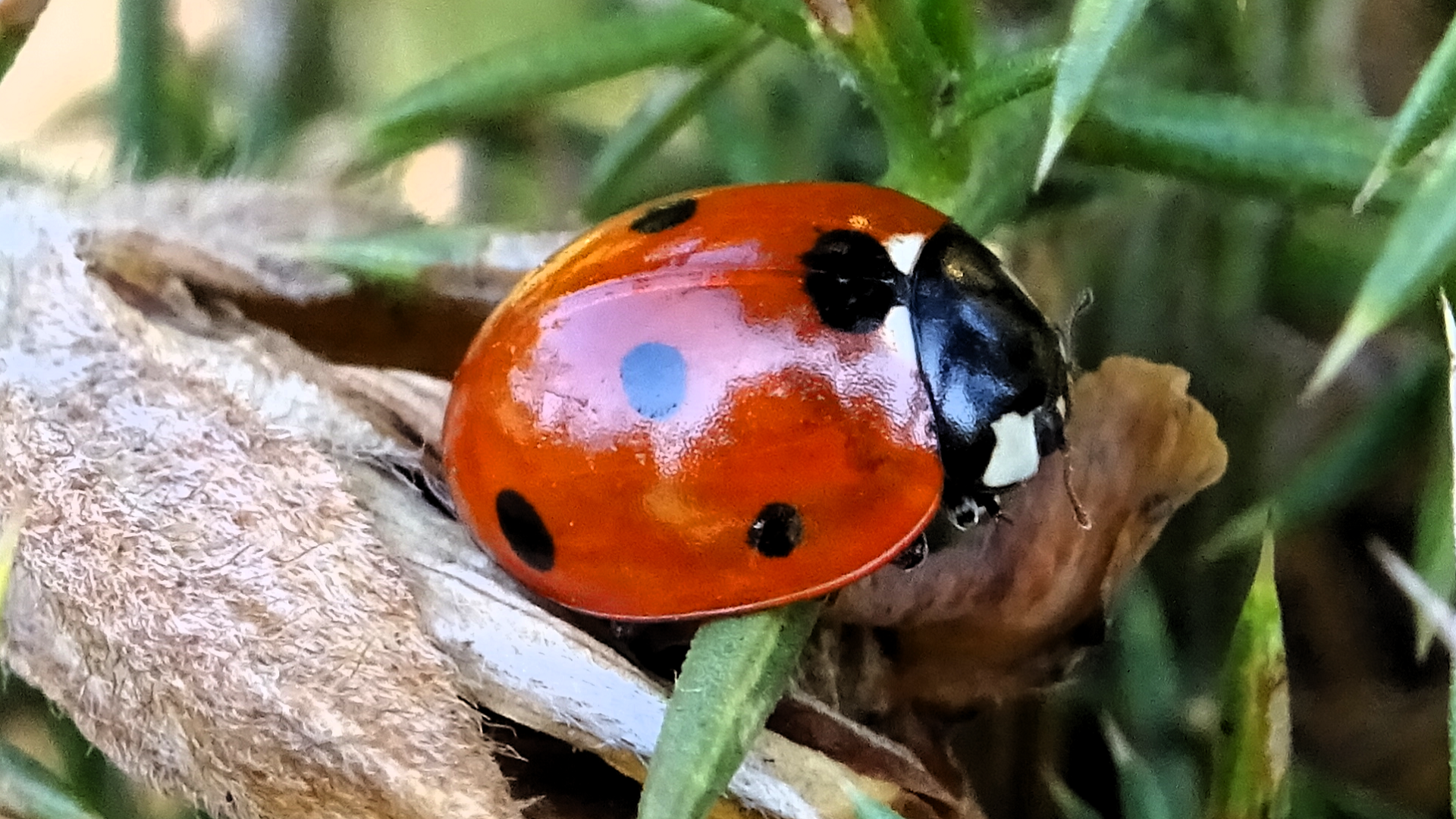Ladybirds are small, round or oval-shaped beetles in the family Coccinellidae. They are often brightly coloured with spots and are well-known for being beneficial insects in gardens because many prey on aphids and other plant pests.
Name: Two-spot Ladybird Adalia bipunctata
Description: The 2-spot Ladybird is normally red with two black spots on the elytra, but comes in other colour forms too, including black with two red spots. Sometimes they have multiple spots. The legs are black, a useful characteristic to tell it apart from the 10-spot Ladybird which has brown legs.
Habitat: Hibernation occurs during winter and these ladybirds usually become active late February or during March. Aphids, small insects, insect eggs, and mites form their diet.
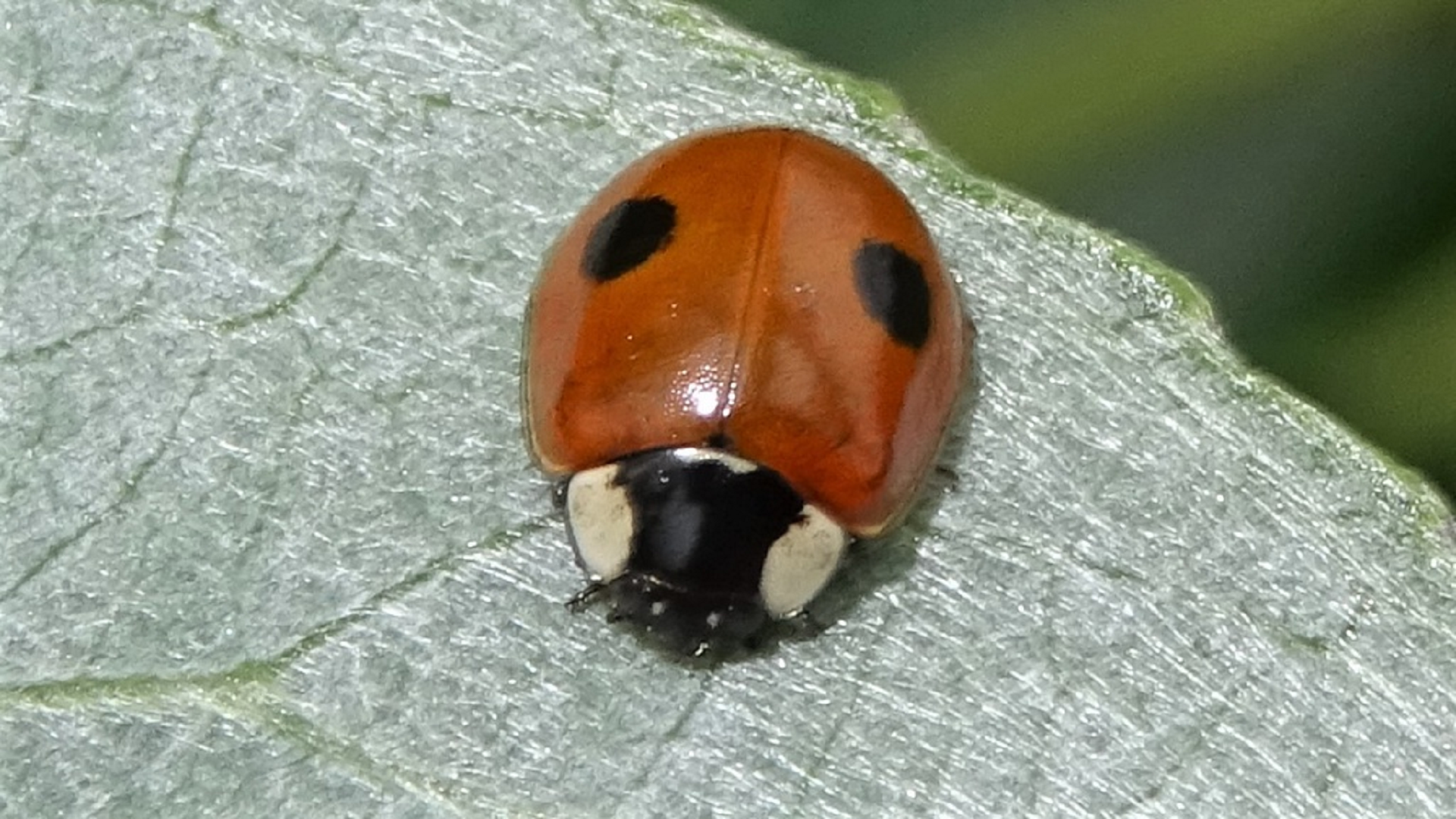
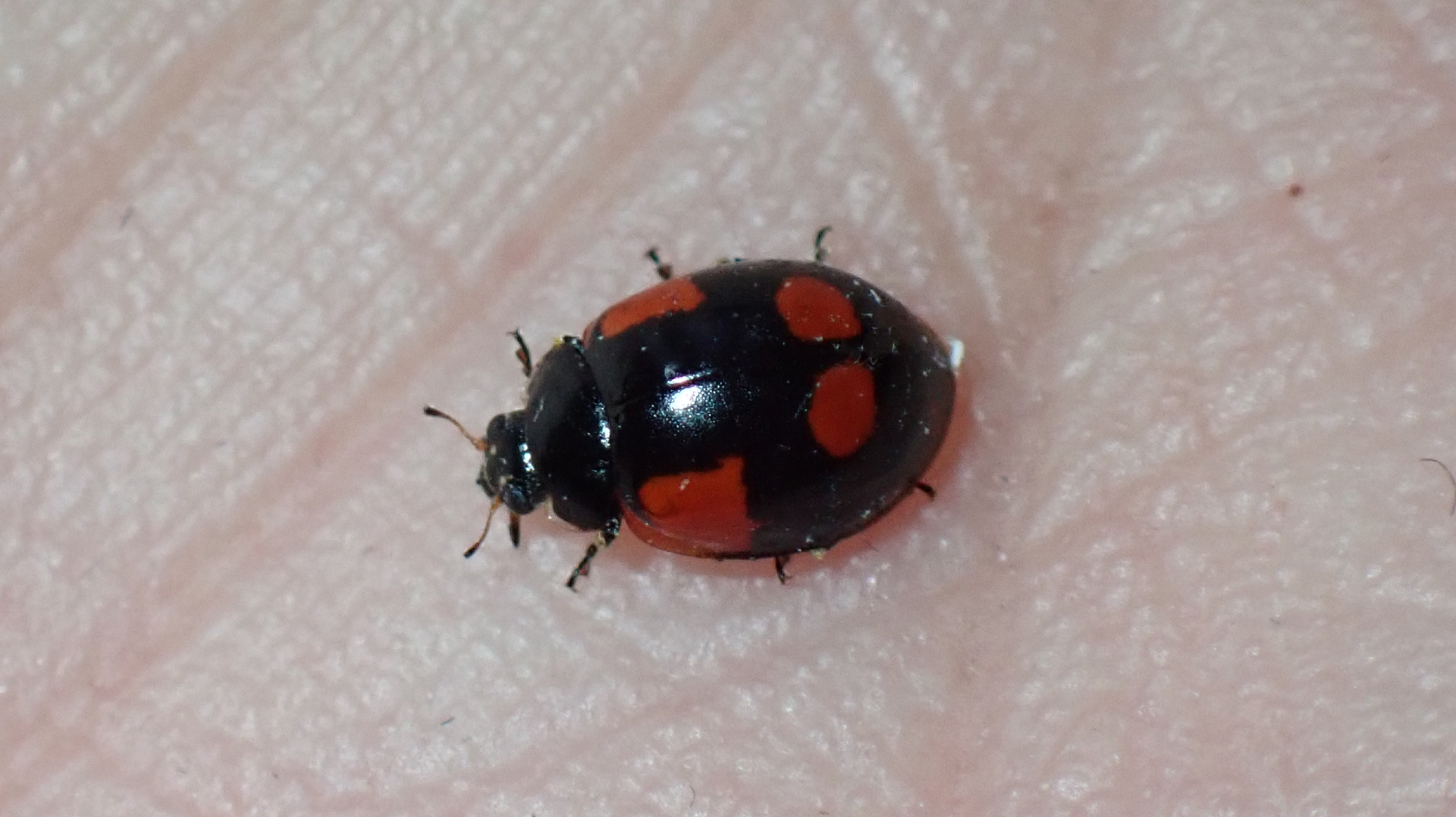
#
Name: Seven-spot Ladybird Coccinella septempunctata
Description: Each wing case has three black spots and another spot is located across both elytra behind the pronotum making a total of seven.
Habitat: Voracious predators of aphids. Adults overwinter under rocks, in leaf litter and beneath tree bark. The most common ladybird species in Europe.
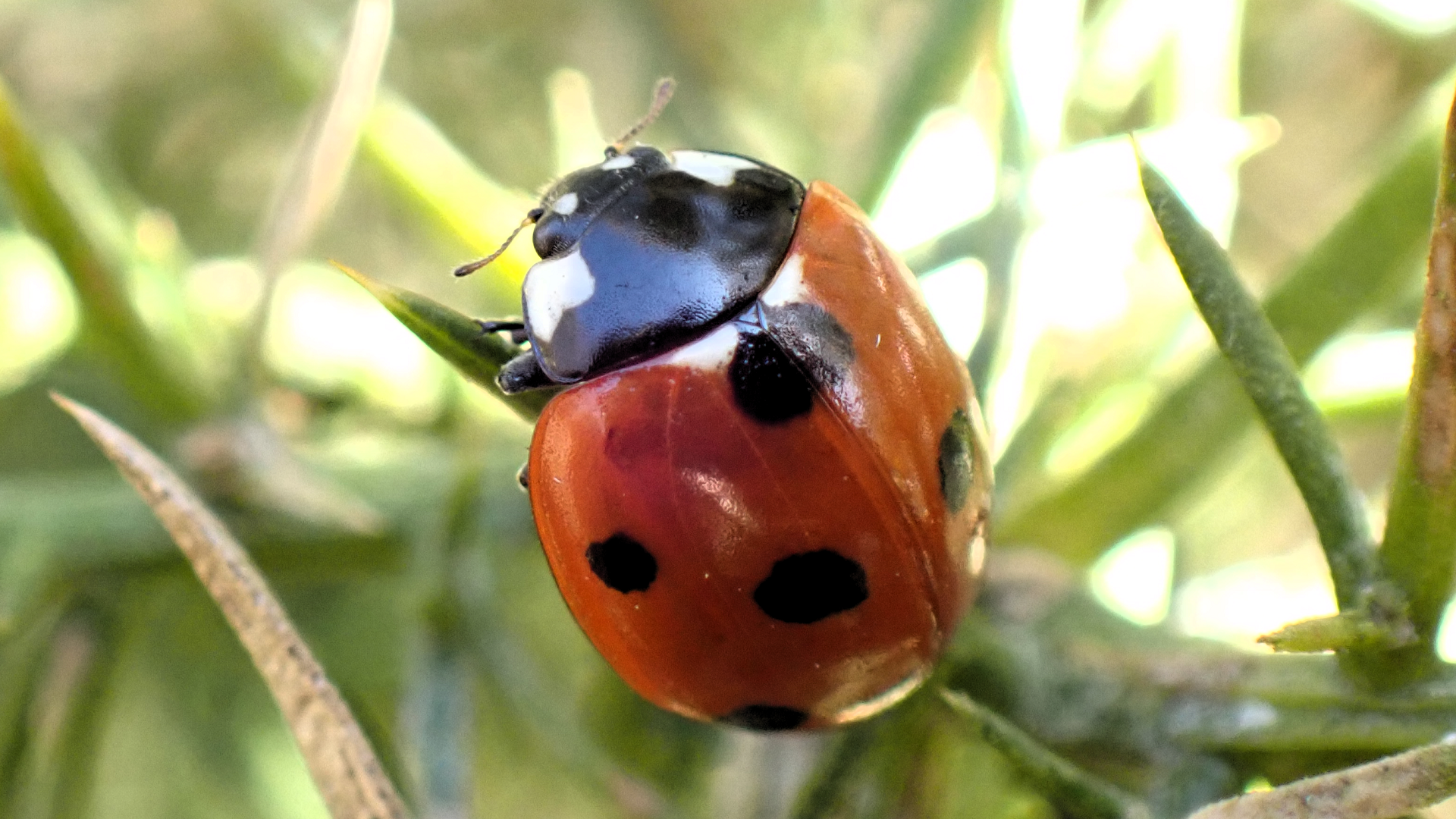
#
Name: 10-Spot Ladybird Adalia decempunctata
Description: Small beetle that doesn't always have ten spots. Fresh specimens have light-brown background colouration to begin with. The brown legs can be useful when identifying this Ladybird.
Habitat: Feeds on aphids. Usually found on hedgerows.
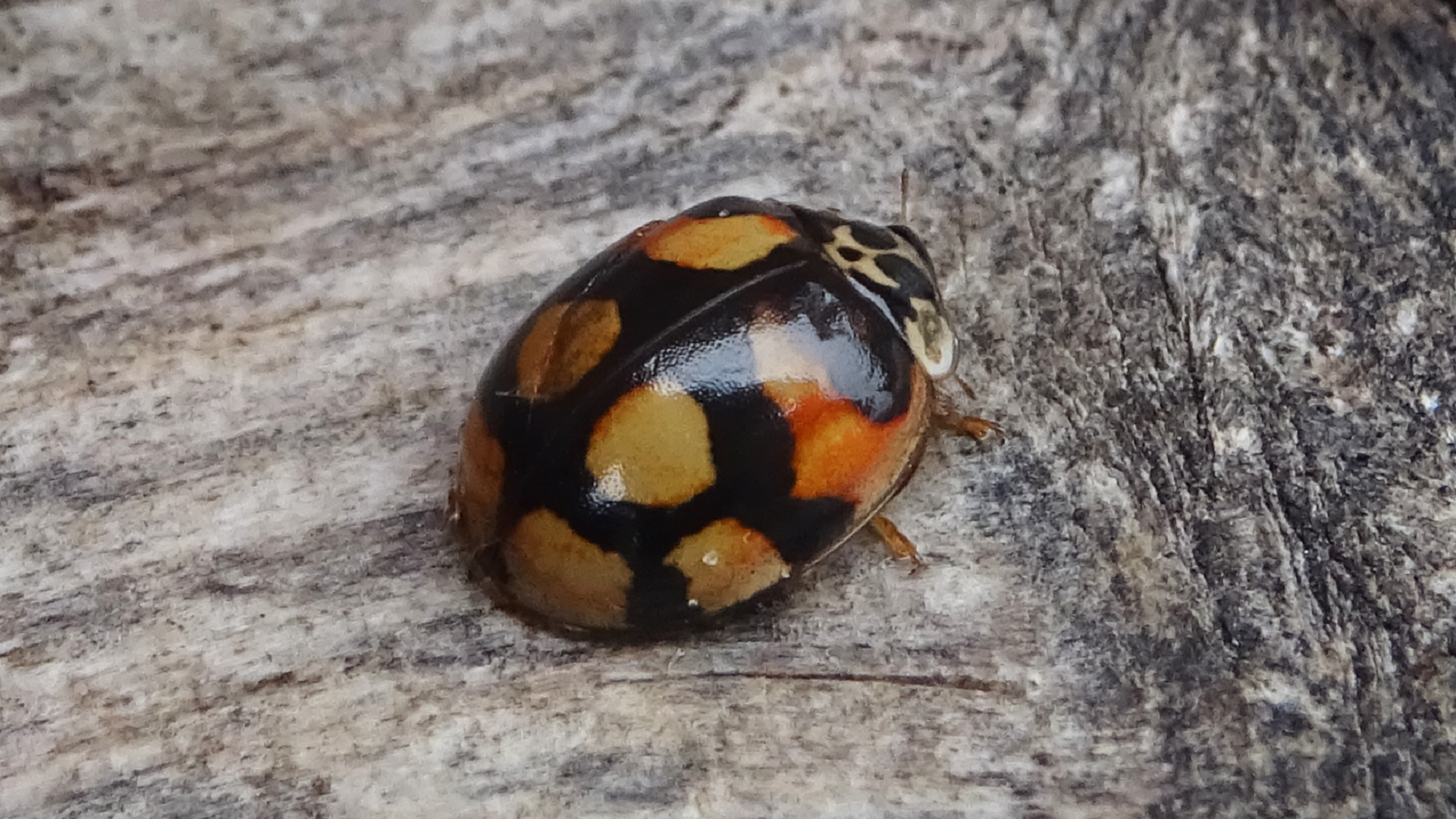
#
Name: Fourteen-spot Ladybird Propylea quattuordecimpunctata
Description: Common beetle measuring 4-5mm long. The spots on elytra are often fused together forming an anchor shape.
Habitat: Found in a range of habitats especially on hedgerows along woodland rides. The adults and larvae feed on aphids.
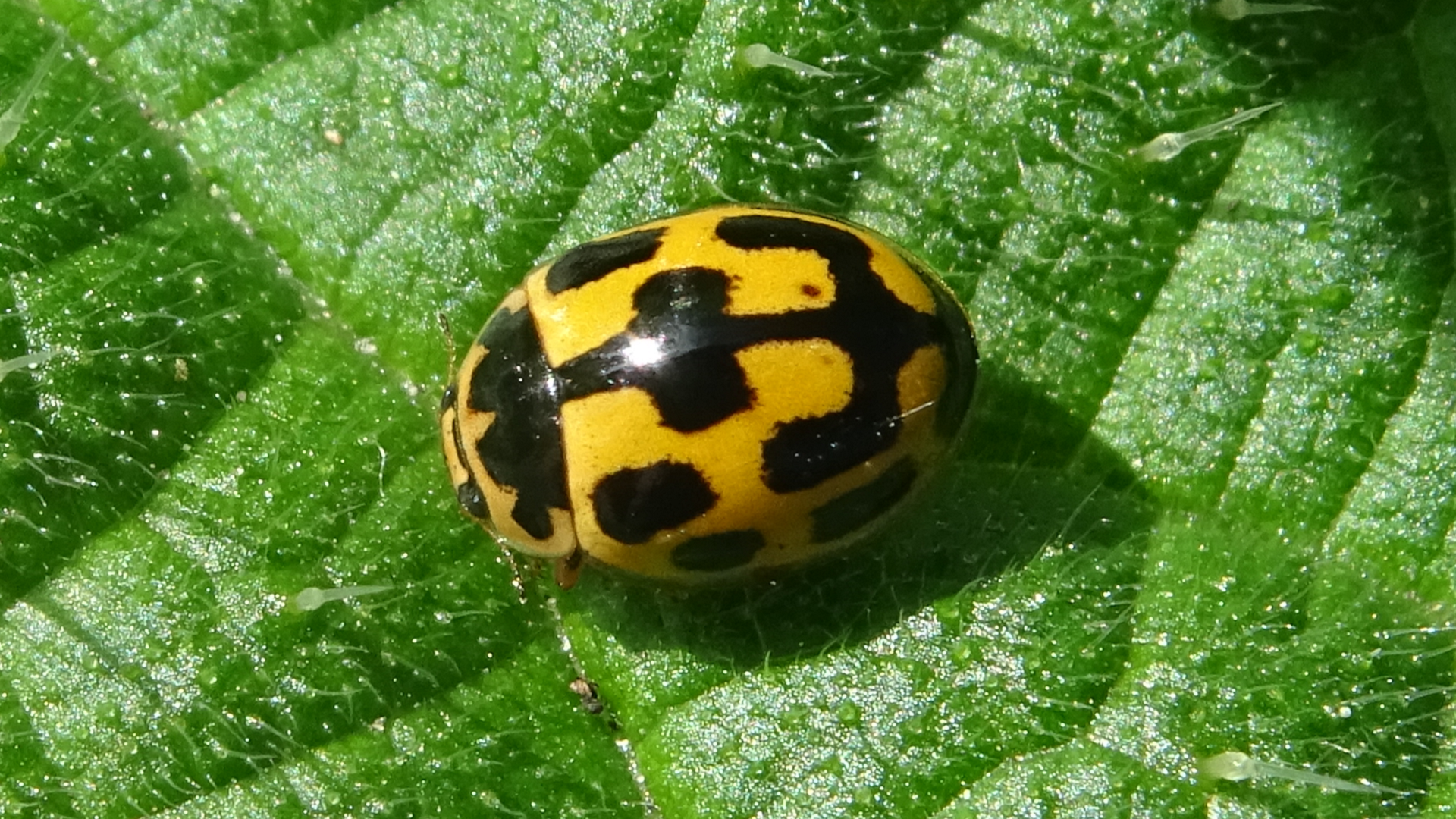
#
Name: Sixteen-spot Ladybird Tytthaspis sedecimpunctata
Description: Small, yellowish ladybird, about 3mm in length that has 13 - 18 black spots. Some spots are often fused together and there is a black centre line on the wing cases.
Habitat: Grassland species usually seen during summer. It feeds on pollen, fungi and nectar. During winter it hibernates in low vegetation, gorse, leaf litter, on fence posts and walls, often in large groups.
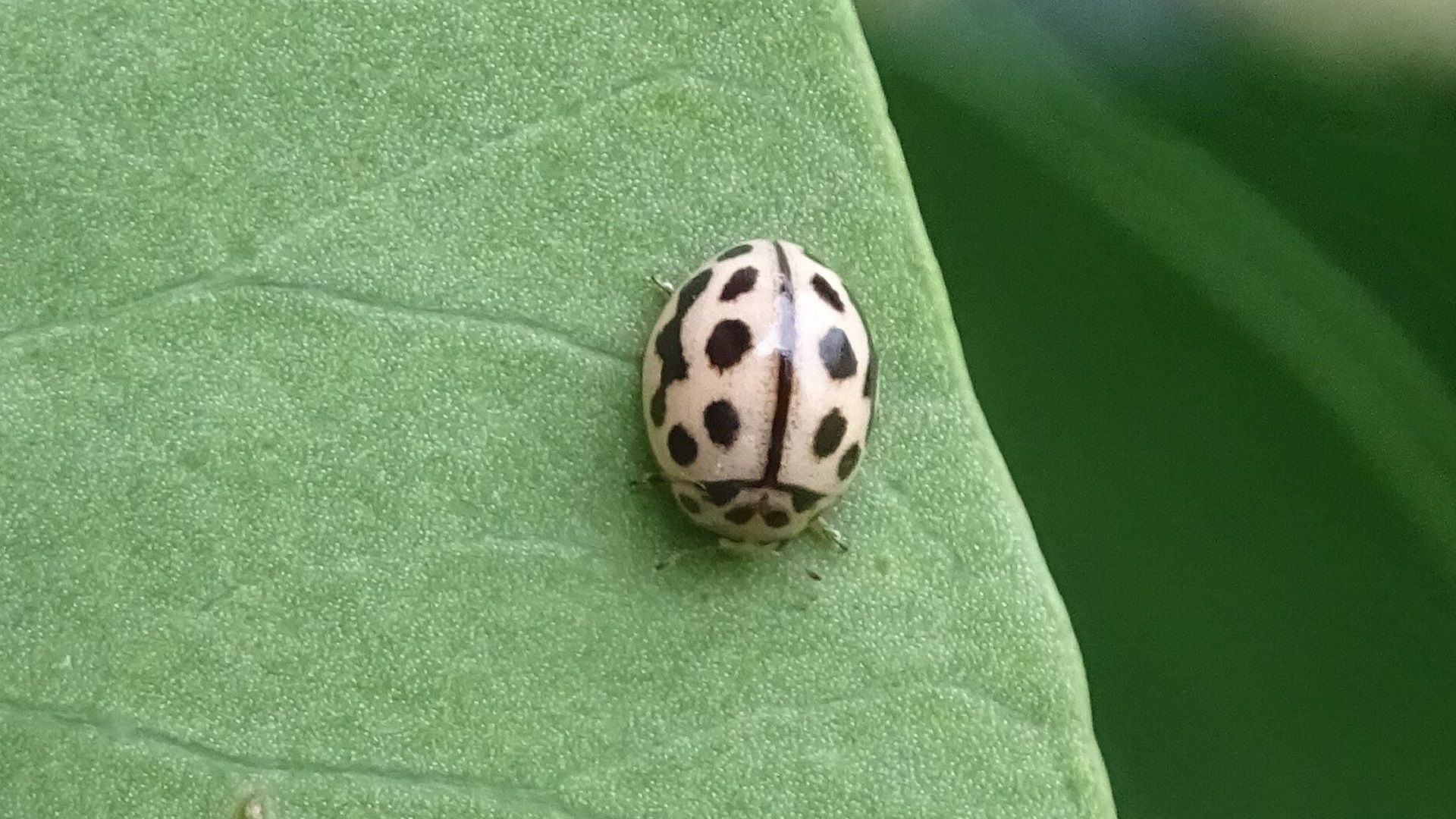
#
Name: Twenty-two Spot Ladybird Psyllobora vigintiduopunctata
Description: Tiny, very bright yellow ladybird about 4mm long.
Habitat: Found in grassland and woodland edges from April to September. Feeds on mildew.
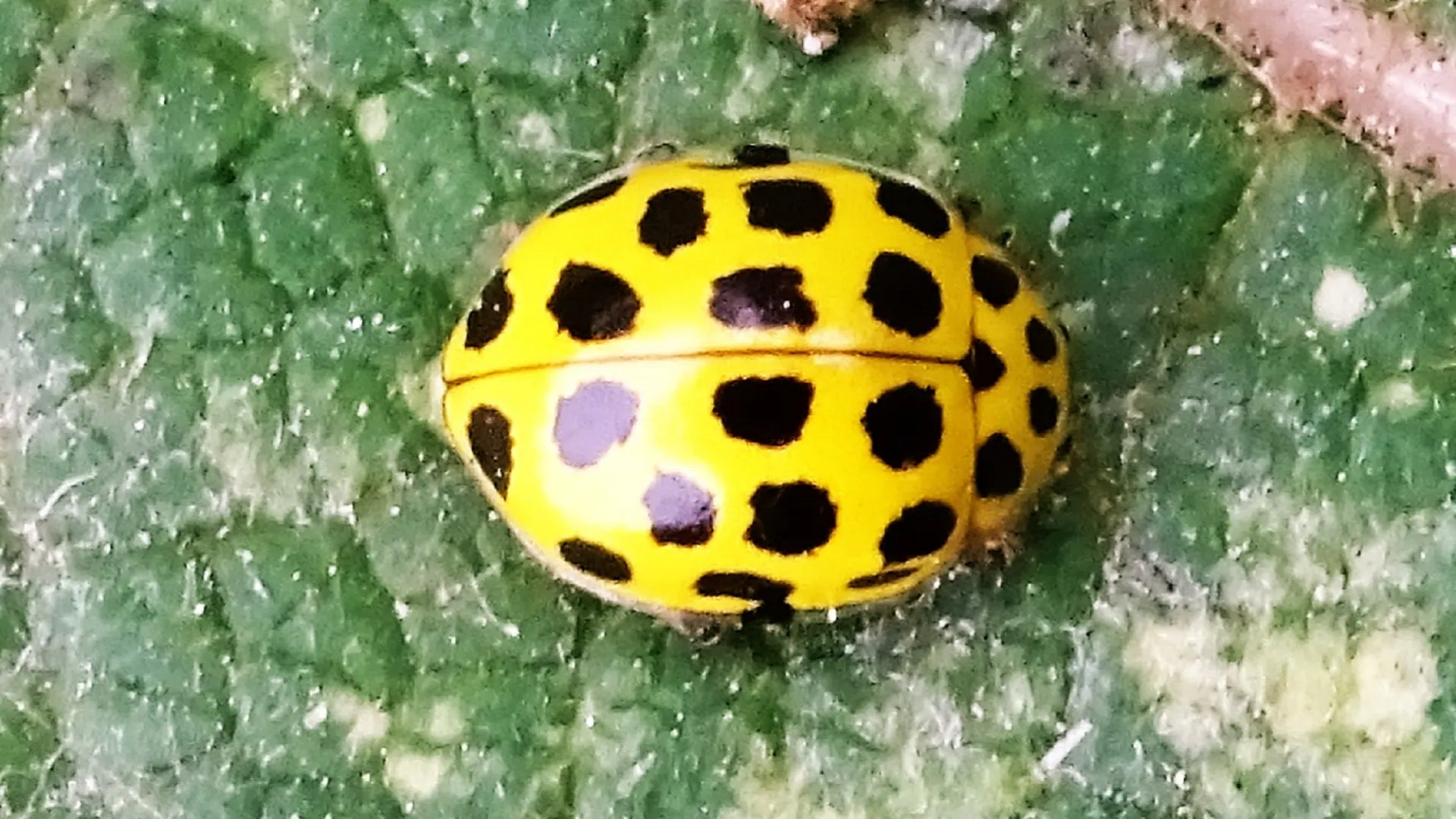
#
Name: Twenty-four Spot Ladybird Subcoccinella vigintiquattuorpunctata
Description: Small orange-red ladybird about 3 - 4mm in length. The elytra have a dusty appearance due to being covered in hairs. The black spots sometimes vary in number and the legs are orange.
Habitat: Found on grass, thistle, nettle, mugwort, knapweed and other low vegetation. Feeds on fungal moulds.
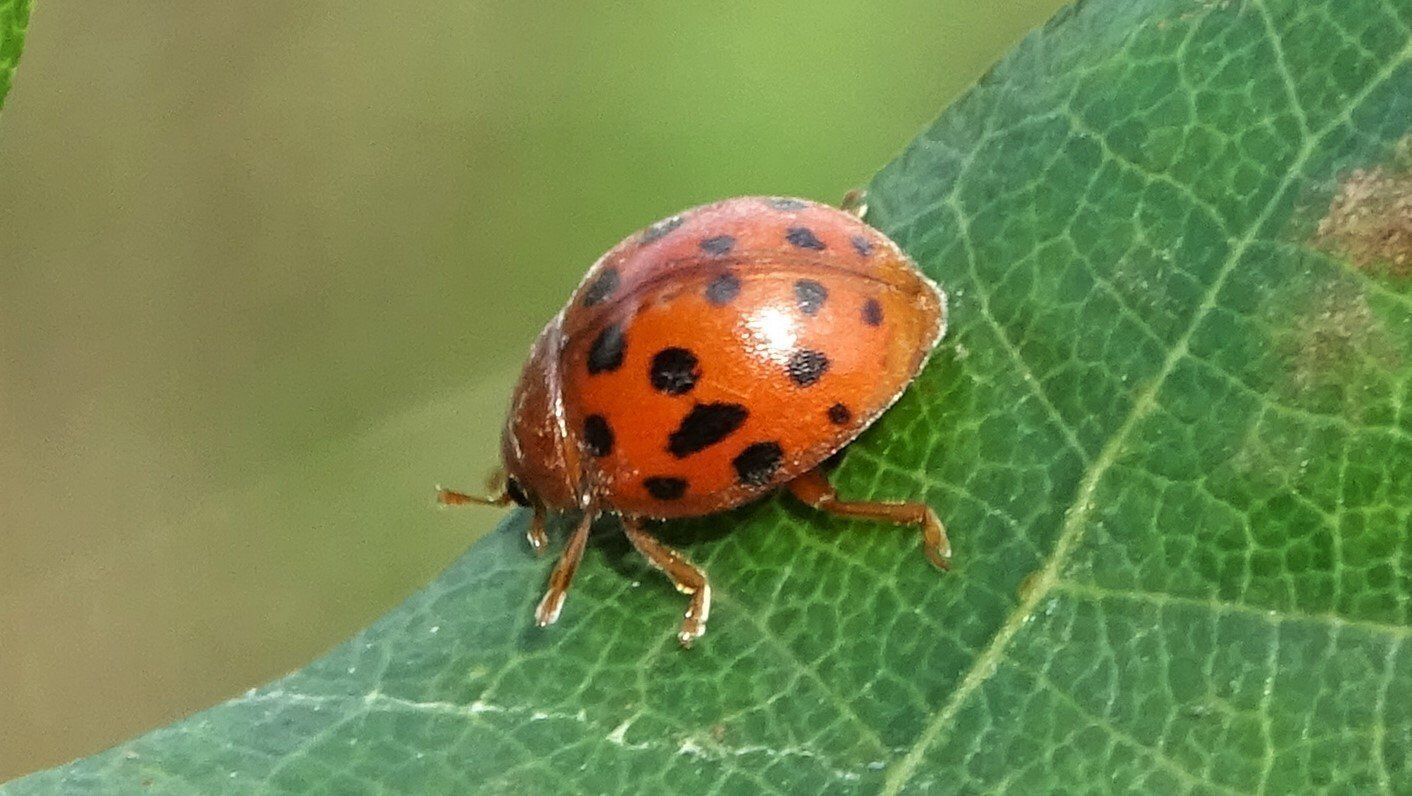
#
© hainaultforest.net. All rights reserved.


